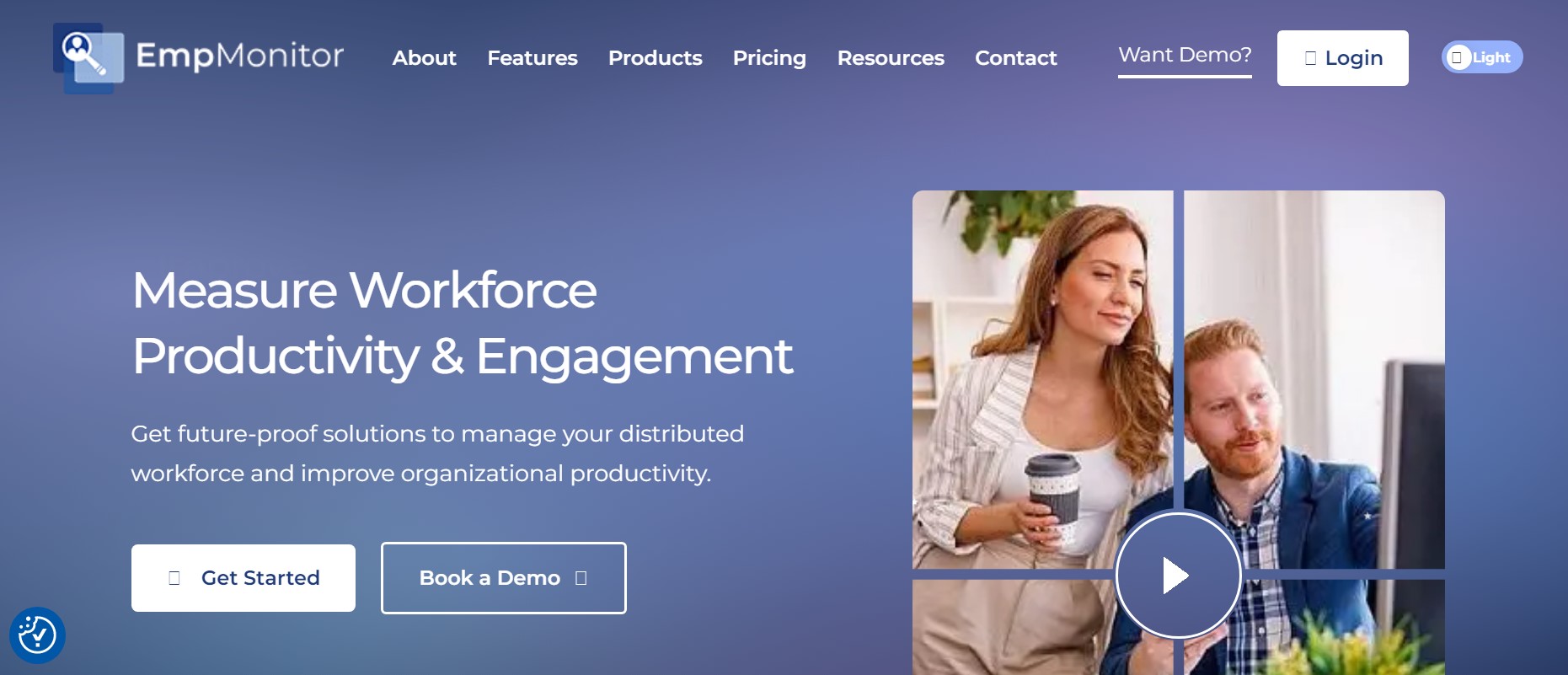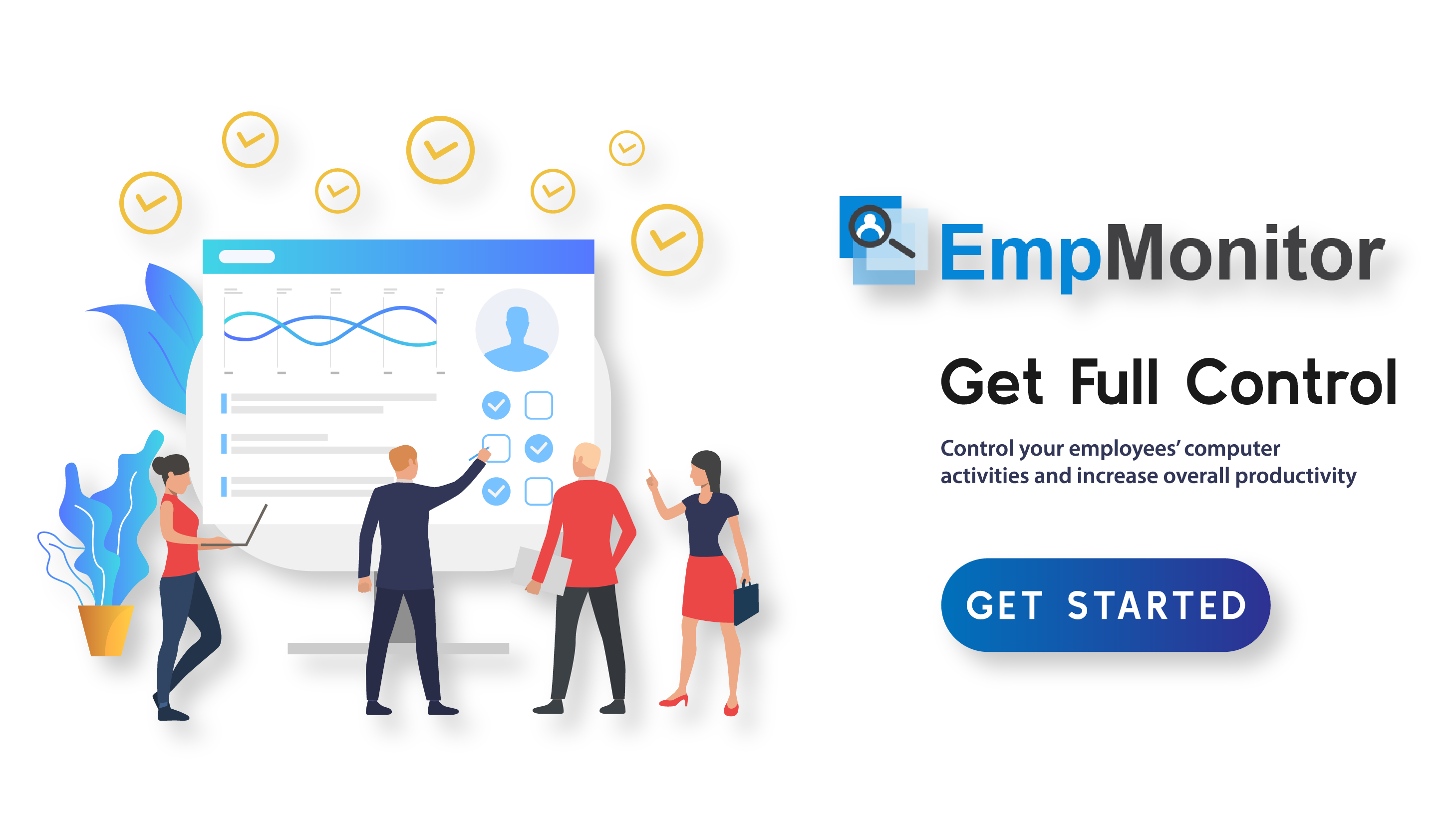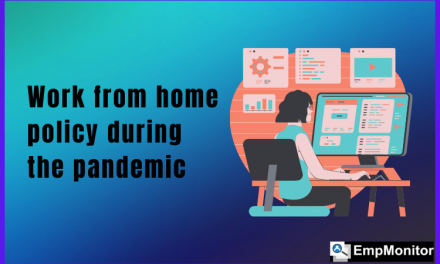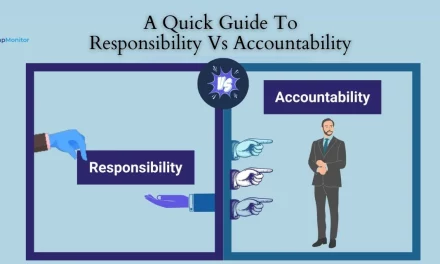In the midst of the discussion over moonlighting and quiet quitting, Satya Nadella has developed a brand-new concept anointed “Productivity Paranoia.” or “Productive Paranoia”.
The phrase was initiated by the CEO of Microsoft, in a recent report on workplace changes. According to the study, 87% of workers claim to be productive at work, yet just 12% of senior executives have complete faith that their team is producing results.
How can HR help managers – and the employees on the receiving end – deal with a world where employers are more worried about employee productivity and engagement and employees are demanding greater autonomy and flexibility?
Let us learn more about productive paranoia and ways to deal with it in this blog.
What is Productive Paranoia
Productive paranoia refers to the concept of employers assuming that the work or performance of their employees is below par.
Managers remain sceptical that teams don’t slack off when they’re not in the office, even years after employees started working from home in large numbers. Growing discord between employers and employees’ centres on how productive employees actually are.
Employers and employees haven’t communicated effectively about productivity and working from home since the start of the pandemic. Senior executives and their employees differ on how productive they are in the current hybrid or remote work models, much as the ongoing tug of war about returning to the office.
Despite research showing that employees believe remote work makes them just as effective as in-person work, if not more so, managers continue to consider that employees aren’t working as efficiently outside of the office.
Managers and directors have developed new strategies for measuring employees’ productivity since the introduction of COVID-19 and the work-from-home period.
According to a Microsoft report, productive paranoia may make hybrid work unsustainable. Employees won’t continue to trust companies if they keep increasing surveillance.
At the same moment, everyone is exhausted. How much more can employees do to prove to their employer that they are productive even when they are already feeling weary without coming to the point where they feel like they need to look for another job?
Is remote work making paranoid circumstances, or do employers need to find better ways to combat remote/ hybrid workforce?
What Steps May Employers Take to Avoid Productive Paranoia?
When managers suffer from productive paranoia, they act in forms that ultimately harm the workers and the business. Not to mention that managers thrusting employees to be more productive likely also face pressure from senior management.
Productive paranoia may quickly decimate a business, leaving behind an aggrieved and resentful workplace. Managers and corporate leaders must communicate the state of the company efficiently and straightforwardly without succumbing to hysteria about productivity.
Here, we’ve compiled a list of the most crucial actions that will help you find the perfect balance, establish a workplace culture that prioritizes employees’ well-being and dodge productive paranoia.
How to Manage Paranoia at Workplace-8 Effective Strategies for Remote and Hybrid Teams
1. Provide Your Workforce with a Strategic Vision
Businesses should spend time with their team members to help them set their year-end goals. The signals that employees acquire from their managers must represent your business priorities and mission.
To lead people towards a more promising future, present an exciting, motivating, challenging, unique, and one-of-a-kind picture of where the company is going.
The most effective leaders involve their people in developing a vision of success where they work collectively as a unit.
They will feel more involved, and you will get to know them better, leaving no room for productive paranoia.
2. Be Adaptable and Have Faith in Your Team Members.
Overall, productive paranoia erodes faith between employees and managers on both sides. Teams are naturally more productive when employers and employees have a strong feeling of trust.
Employers who assume positive intent and trust that their employees are delivering what is required, rather than presuming they are slacking off or taking advantage of a hybrid or remote arrangement, add to a general sense of trust.
Top managers and leaders need to create specialized strategies for employees who want flexible hybrid arrangements. To counter productivity paranoia, bring trust into your company’s culture. Creating moments that matter at work is another way to make time spent there count.
Furthermore, flexibility and the hybrid working system are inextricably linked. Employees seek flexibility to be free of stringent working constraints.
Another necessity is to experiment with various models. Managers may learn what works best for their organization by allowing employees to choose their place of employment.
The primary goal of flexibility in a remote/ hybrid work environment is to provide employees with options. Employees, for example, can select to work from home, partially from the office, or both.
Because of the flexibility, employees can decide whether to work in the morning, during the day, or at night.
Furthermore, some experts believe that flexibility in the working paradigm indicates people partaking in critical managerial choices.
When managers involve employees in decision-making, their requirements are better recognized and met, which augments productivity and eradicates remote work paranoid concerns.
3. Maintain Open & Regular Communication
The first step to ensuring business success is clear communication, particularly in a remote and hybrid work paradigm where misinterpretation may easily lead to misunderstanding and a lack of trust.
Additionally, a lack of trust can quickly build paranoia between the manager and the team.
To minimize confusion and disagreement, each employee, whether based in the office or working remotely, needs to be informed of their responsibilities and obligations as well as their working hours.
Additionally, people who work from home could miss necessary office conversations, naturally feel excluded, and form misunderstandings with their bosses until the manager is smart enough to resolve these issues naturally.
By setting up daily or weekly meetings with teams, it is possible to prevent all of these problems and allow for better communication among team members about expectations and priorities. These gatherings will discuss challenges, team or individual achievements, and remarkable employee efforts that further business goals.
Additionally, employees will get a chance to socialize and develop a sense of belonging, both of which are essential for boosting engagement and will subside productive paranoia concerns in turn.
4. Take Employee Feedback for Quick Data-Driven Decisions
It’s more important than ever to consider the work preferences of your team. A flexible work environment permits employees to better juggle work and life.
By employing an automated employee survey, you may find more about how your staff feel and discover fresh opportunities for growth.
A hybrid work environment might benefit from routine employee feedback gathering and precise event tracking with the HR team.
Listening to your team is the most crucial thing you can do to create and maintain a positive, long-lasting culture, and any hybrid working style should accentuate this.
When your company grows, use pulse surveys to collect input from your team on what they need to achieve their jobs and to enforce any changes.
Giving feedback can significantly increase engagement and productivity in a remote/ hybrid work style, in addition to receiving input. Also, it will dodge productive paranoia completely from your workspace.
The absence of communication from top management can easily make employees feel undervalued.
If their efforts are appreciated and applauded, regardless of how small the success may be, people will continue to be driven and believe that their work matters.
5. Prioritize Employee Health and Wellness
Health and fitness are the most recent priorities on HR’s list. Employee involvement will boost by evaluation, monitoring, and action on the data gathered through well-being surveys.
When employees are stressed out at work or even in their personal lives and believe that their bosses are concerned about their welfare, they are more willing to ask for help.
By scheduling one-on-one meetings or organizing mental health awareness events, businesses can create an atmosphere where team members feel comfortable addressing their well-being.
As businesses shift to the new hybrid working paradigm, employee mental health should continue to be a top priority.
A strong workplace culture where employees feel valued and cared for by seniors is critical for fostering employee engagement and busting off productive paranoia in remote and hybrid environments.
Your efforts to build relationships with your team will impact their productivity. Refresh leaves, wellness days off, and initiatives focusing on mental and physical well-being are crucial for a sound and comfortable work-life balance.
6. Empathy & Compassion
A workplace that respects people and fosters empathy brings out the best in each person.
Remote workers may experience pressure to put in more hours, which influences their social and emotional well-being. To underline the importance of personal spaces, it is compulsory to set straightforward rules for working hours and to stay in touch with people.
Supervisors must be honest, compassionate, and empathic to prevent issues with productive paranoia and promote a healthy work-life balance. Organizations and their executives need to prioritize people more and understand the importance of creating inclusive social environments.
7. Invest in Tools & Technologies that Will Increase Productivity
The business must continually keep up with technological advancements and enforce best practices and tools to empower its employees.
Businesses will face a challenging time retaining productive employees if they lack the technical capabilities to connect the dots.
The ability to communicate is paramount in a remote/ hybrid work environment. For everyone to be productive, whether working in an office or from home, the same information must be available to all team members.
Additional tools, including cameras, headphones, and video-conferencing software, may be needed for remote workers to join meetings. Evaluate the drawbacks of technology and the best ways to apply it to boost productivity.
Decide whether video calls are necessary and when another method of communication will suffice. Be prepared to train your team or switch platforms to find the optimum mode.
Further, switch to EmpMonitor, the best workforce management software, the one-stop solution for all employee management issues to evade productive paranoia in the workplace.
To manage your distributed workforce and increase organizational productivity, get future-proof solutions with EmpMonitor.
Request a free demo of EmpMonitor to learn more–
8. Prioritize the Growth and Training of Your Employees.
Global business success depends on team development and growth training.
By providing detailed, top-notch employee training timetables, employers may help employees in honing their skills and bridging any knowledge gaps.
Programs for employee training and development will also help your team become more commanding so that everyone on the team can profit from a pooled knowledge and skill base.
Your company will profit from such a program since it will strengthen any weak points and evenly share the task among your team members, besides evading productive paranoia.
Some benefits of a valuable employee training program for both employers and employees are as follows:
- Raise Team Performance as a whole
- Boost team spirit
- Increased return on investment
- Minimize supervision requirements
- Ensure the business is sturdy and flexible.
Read More-
Remote Workforce Management Reshaped by Coronavirus; A Step Closer to the Future
The key to overcoming productive paranoia is striking a balance between liberty and management. If leadership can do a great job of communicating goals, outlining expectations, & collaborating with employees to maximize their potential and deliver outcomes, the conversation about productivity concerns becomes unwarranted once employers’ and employees’ well-being is secured.
Employers can evade productive paranoia by enforcing better processes and systems that allow employees to be recognized for their accomplishments and developed efficiently, even when they work remotely.
By giving feedback when it’s needed and following up to get a general sense of how everyone is doing, managers may demonstrate their concern for their staff.














